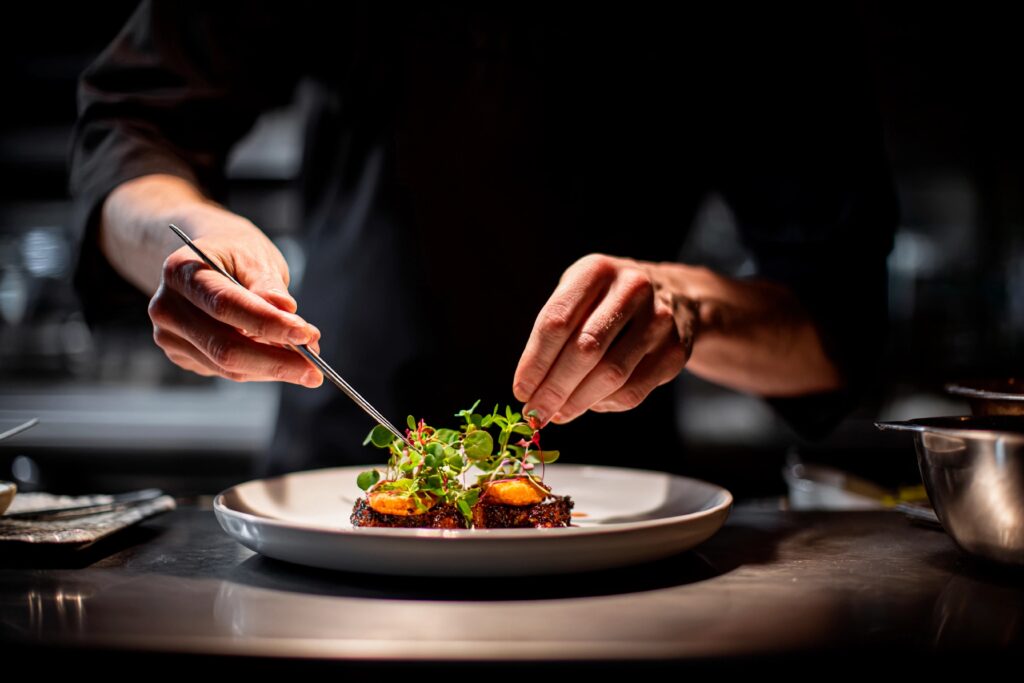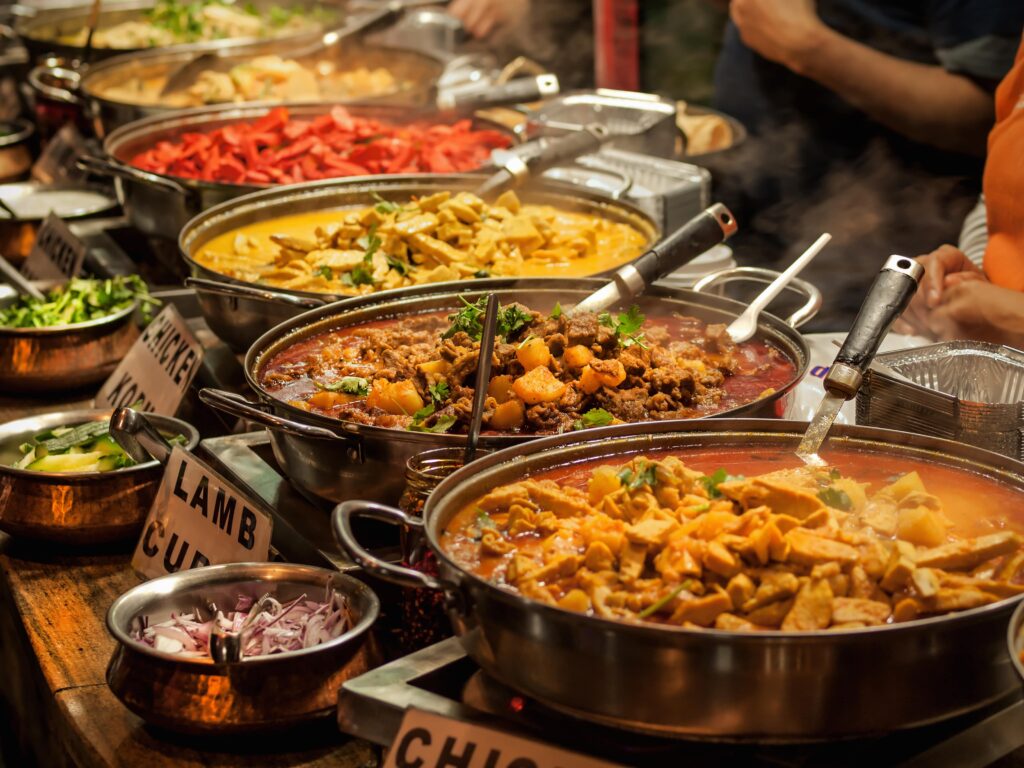Tastes change, trends evolve, and competition is always on the rise. Understanding the restaurant business is crucial to ensuring your offerings always hit the mark and attract customers. Plus, it gives your restaurant the edge over the competition. So, here’s how to conduct market research for your restaurant to lessen risks, boost profitability, and stay ahead.
How to conduct market research to give your restaurant a competitive advantage
Know your customer inside out
Before you design your restaurant’s menu and start creating dishes, you need to understand who you’re cooking for. Gaining an in-depth understanding of your target market helps to inform your marketing strategy.
Here’s what to gather:
- Who are they? Consider factors such as age, income, occupation, and family status. Beyond demographics, explore their psychographics (values, lifestyle) and behavioural patterns (dining frequency, digital habits). Are they students, young professionals, families, or a mix? What is their lifestyle like?
- What are their dining habits? Do they prefer quick lunches, leisurely dinners, or takeaways? Are they health-conscious, adventurous eaters, or looking for comfort food? Are they interested in fine dining or a more casual setting?
- What motivates their choices? Is it price, convenience, health benefits, ethical sourcing, or a unique dining experience?
- What are their pain points? Are they looking for more vegan options, fast service, or a kid-friendly environment?
- What are their customer expectations? Do they expect seamless online ordering, quick delivery, or a specific ambience?
How to gather these valuable insights:
- Surveys: Online survey tools (like SurveyMonkey or Google Forms) or in-person questionnaires can be incredibly insightful for quantitative research. Keep them concise and focused, and consider offering incentives for completion, such as a free meal at your restaurant.
- Customer interviews & focus groups: Casual conversations and structured discussions with your existing and potential customers.
- Social media listening: What are people saying about your restaurant and direct competitors online? What market trends are they discussing? Social media is a goldmine for understanding customer preferences and emerging trends.
- Loyalty programs: Data from loyalty programs can reveal purchasing patterns and customer preferences over time, helping you make informed decisions about changes to menus, front-of-house decor, staffing and a great deal more.
- Online reviews: Platforms like Google, TripAdvisor, and Yelp offer unfiltered customer feedback on your restaurant and other restaurants.
- Leverage existing data: Your POS system and reservation platforms (like ResDiary) provide invaluable insights into popular dishes, peak times, and customer spending patterns.
Spy on the competition (ethically, of course!)
Understanding your direct competitors isn’t about copying them; it’s about identifying their strengths, weaknesses, and what makes them unique. This helps you carve out your own niche, highlight what’s different, and develop a strong competitive advantage. This is a crucial part of restaurant market research.
Here’s what you need to find out:
- Who are your direct competitors? These are restaurants offering similar cuisine (e.g., Italian restaurants if you serve Italian) or targeting the same customer base.
- What are their menu offerings like? What are their pricing strategies? How do they position themselves in the restaurant market?
- How do they market themselves? What’s their online presence like? Do they use social media extensively for their marketing campaigns?
- What do their customers say about them? Check online reviews (Google, TripAdvisor, Yelp). Look for recurring positive and negative feedback to understand their customer experience.
- Eat at their restaurants: Experience their service, atmosphere, and food firsthand. What do they do well? Where could they improve?
Conduct a SWOT analysis (Strengths, Weaknesses, Opportunities, Threats) on your own restaurant and key competitors. This structured framework helps you clarify your unique value propositions, identify areas for improvement, and spot market opportunities or potential threats to your restaurant’s strengths. This provides a clearer picture of your competitive advantage and helps you focus your energy effectively.
Understand your local market
Even if you’re an established restaurant, understanding your local environment and the broader economic landscape is an ongoing process. If you’re considering a new location for your own restaurant, this step is paramount for any restaurant owner.
- Foot traffic: How many people pass by your location? When are the peak times? This can influence market demand.
- Local businesses and institutions: Are there offices, schools, gyms, or residential areas nearby that could be a source of potential customers?
- Demographics of the area: How do the residents’ income levels, age groups, and culinary preferences align with your restaurant concept?
- Accessibility: Is there ample parking? Is it easily accessible by public transport?
Tools for location market analysis:
- Government census data: Provides detailed demographic information and insights into the local area. Local council websites or government business support sites can offer specific demographic information for the local area.
- Local business associations: Can offer valuable information about the area’s economic health and market trends.
- Observational research: Simply spending time in the area and observing foot traffic and local activity can provide valuable insights for your business plan.
Stay on top of industry trends
The food business is dynamic. What’s hot today might be old news tomorrow, and economic shifts can quickly impact consumer spending habits. Regular market research helps you spot emerging trends and adapt your offerings accordingly, ensuring you maintain a competitive edge in the restaurant industry.
- Dietary preferences: Are plant-based diets growing? Are there new allergen concerns? Are customers interested in different cuisine options?
- Technology: How are delivery apps, online ordering, and digital menus changing the dining experience?
- Sustainability: Are customers increasingly looking for eco-friendly practices and ethically sourced ingredients?
- Cuisine trends: Are specific global cuisines gaining popularity? Are there new ingredients or cooking methods emerging? Staying updated on these current trends is vital for your restaurant’s success.
How to stay informed and identify trends:
- Industry publications and blogs: Read reputable food industry news sources and blogs.
- Food shows and exhibitions: Attend these events to see new products, concepts, and conduct concept testing.
- Follow food influencers and chefs: See what’s trending on social media.
- Talk to your suppliers: They often have insights into new products and market demand.
- Competitor analysis: Keep an eye on what your direct competitors are doing and how they are responding to market trends.
Test and iterate
Market research isn’t a one-and-done activity; it’s an ongoing process that helps you make informed decisions and increase your market share. Use the insights you gain from conducting market research to:
- Develop new menu items: Based on customer preferences and market trends.
- Refine your pricing: Ensure it’s competitive and perceived as fair.
- Improve your service: Address pain points identified by customer feedback to enhance the customer experience.
- Optimise your marketing: Target your audience more effectively through improved marketing campaigns.
- Adapt your restaurant concept: Be prepared to refine your restaurant’s strengths and offerings based on the insights gained from your market research.
And then, crucially, measure the results! See if your changes lead to increased sales, positive online reviews, or more loyal repeat customers. Track key performance indicators (KPIs) like average spend per customer, table turnover, and repeat customer rates.
Effective market research helps your restaurant grow – and so do we!
For a new restaurant concept or an independent restaurant, initial market research is crucial for testing the concept and validating your business and menu plan before opening, ensuring the right location and strong market demand. However, the continuous cycle of restaurant market research reduces risk, enhances profitability, and cultivates lasting customer loyalty for every restaurant, old and new.We’re sure you’re just as passionate about fresh fruit and vegetables as you are about market research for your restaurant. Our fresh produce is hand-picked in the best fruit and veg markets in London. Become a customer today and see why we’re a trusted supplier of 100s of restaurants across the city.


